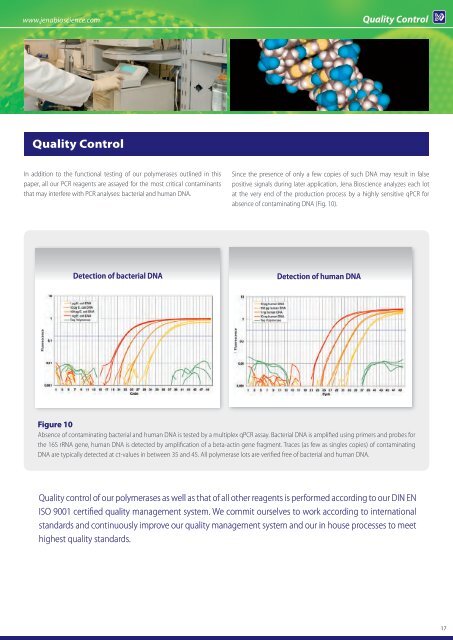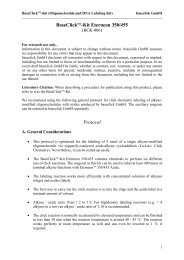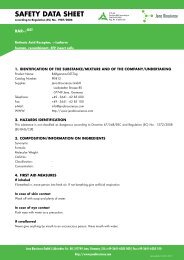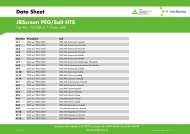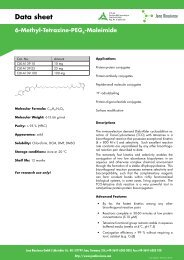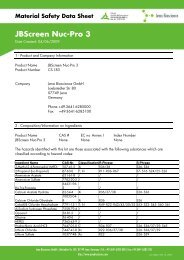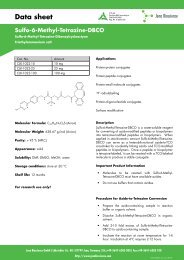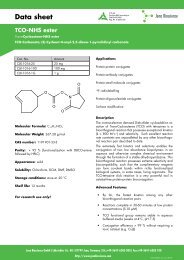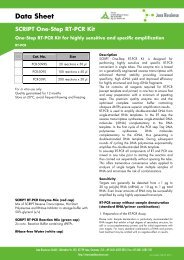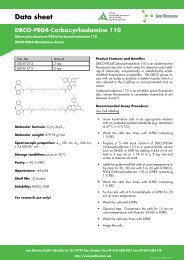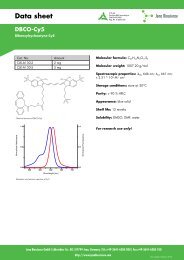Polymerase Guide - Jena Bioscience
Polymerase Guide - Jena Bioscience
Polymerase Guide - Jena Bioscience
You also want an ePaper? Increase the reach of your titles
YUMPU automatically turns print PDFs into web optimized ePapers that Google loves.
www.jenabioscience.com Quality Control<br />
Quality Control<br />
In addition to the functional testing of our polymerases outlined in this<br />
paper, all our PCR reagents are assayed for the most critical contaminants<br />
that may interfere with PCR analyses: bacterial and human DNA.<br />
Fluorescence<br />
Detection of bacterial DNA<br />
Since the presence of only a few copies of such DNA may result in false<br />
positive signals during later application, <strong>Jena</strong> <strong>Bioscience</strong> analyzes each lot<br />
at the very end of the production process by a highly sensitive qPCR for<br />
absence of contaminating DNA (Fig. 10).<br />
Detection of human DNA<br />
Figure 10<br />
Absence of contaminating bacterial and human DNA is tested by a multiplex qPCR assay. Bacterial DNA is amplified using primers and probes for<br />
the 16S rRNA gene, human DNA is detected by amplification of a beta-actin gene fragment. Traces (as few as singles copies) of contaminating<br />
DNA are typically detected at ct-values in between 35 and 45. All polymerase lots are verified free of bacterial and human DNA.<br />
Quality control of our polymerases as well as that of all other reagents is performed according to our DIN EN<br />
ISO 9001 certified quality management system. We commit ourselves to work according to international<br />
standards and continuously improve our quality management system and our in house processes to meet<br />
highest quality standards.<br />
Fluorescence<br />
17


